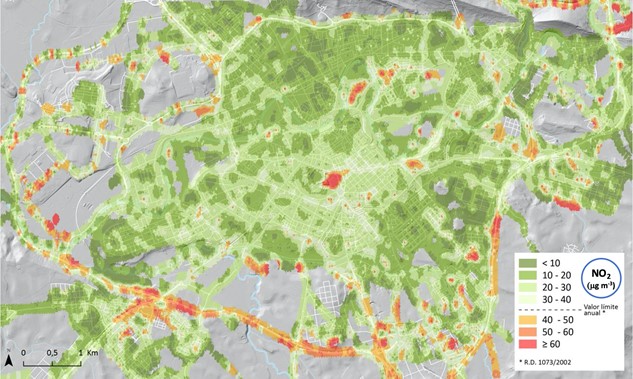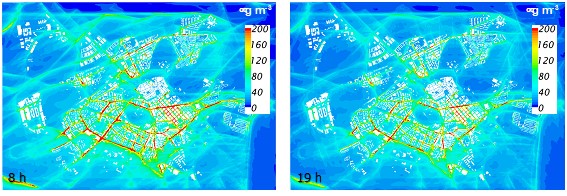 Urban air quality
Urban air quality
One of the great challenges of urban sustainability is to address the undesirable changes and impacts that arise within cities.

The project Life+Respira, made up of a multidisciplinary team of 35 researchers, has made it possible to monitor the levels of the main urban pollutants in the city of Pamplona.
The project, which is a clear example of citizen science, has been based on the involvement of volunteer cyclists to obtain large-scale data on the distribution of urban pollutants through the use of low-cost sensors that have been carried on their bicycles during their regular journeys. mobility The data thus obtained have been used for the development of mathematical models that are of great financial aid value for decision making, improving the quality of life of the cities through the restructuring of the urban design , the adoption of new planning strategies and the implementation of updated management plans adapted to each city.
The results obtained have shown that the distribution of pollutants is strongly linked to the emission sources (mainly traffic) and their temporal variations and, to a lesser extent Degree, climatic circumstances and the topographic design of the city. Significant variations have been observed in the exhibition of cyclists to air pollutants as a function of distance from the road. Riding on the roadway increased inhaled nitrogen oxides by 37% to 54% compared to riding on the sidewalk or bike path, while concentrations of particulate matter (PM10 and PM2.5) were 90% and 52% higher, respectively, when riding on the roadway axis. The use of vegetation barriers, such as hedges, helped to reduce the exhibition of cyclists and pedestrians to air pollution by up to 30%. The same effect extends to trees, although on certain streets, a 15% increase in pollution was detected at ground level. This increase in pollution is related to the species, size and location of the trees, aspects that should be taken into account when planning the management of urban trees.

The model developed from the pollution levels recorded by cyclists at 1,463,090 points made it possible to study the hourly evolution of pollutant levels in the city of Pamplona. Thus, two pollution peaks were detected, one in the morning (8 am) and the other in the evening (7 pm), coinciding with the hours of intense traffic, when most people commute to and from work by car. However, levels were significantly reduced during the night and in the central hours of the day.

The model also made it possible to estimate the economic costs associated with the leave air quality, which amounted to a total of 5.7 M € per year in the city of Pamplona, with the reduction in life expectancy being the most important external cost.
The project LIFE+RESPIRA has tried to promote a cultural change necessary to move towards sustainability, promoting the reintroduction of the presence and respect for nature in the urban environment and its way of life. At final, it is about opening the doors to nature in the city.
In the following link you can watch the documentary "En el aire" which narrates, from beginning to end, the development of project Life+Respira: http://enelaire.eu/
The project Life+Respira (LIFE13 ENV/ES/000417) has been funded by the European Union's Environment and Climate Action Programme (LIFE).
Results:
English
- LIFE + RESPIRA Guide Book
- LIFE + RESPIRA Layman Report
English:
- LIFE + RESPIRA Guide Book
- LIFE + RESPIRA Final Public Report
Partners of project:
- Environmental management of Navarra (GAN-NIK)
- Center for Energy, Environmental and Technological Research (CIEMAT).
- University of Navarra (UNAV).
